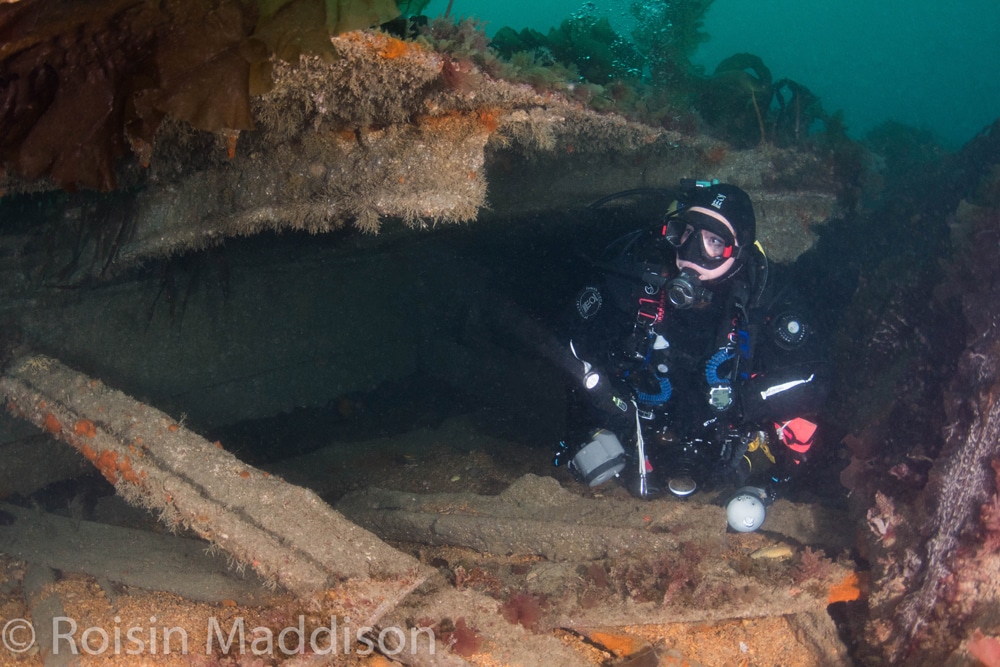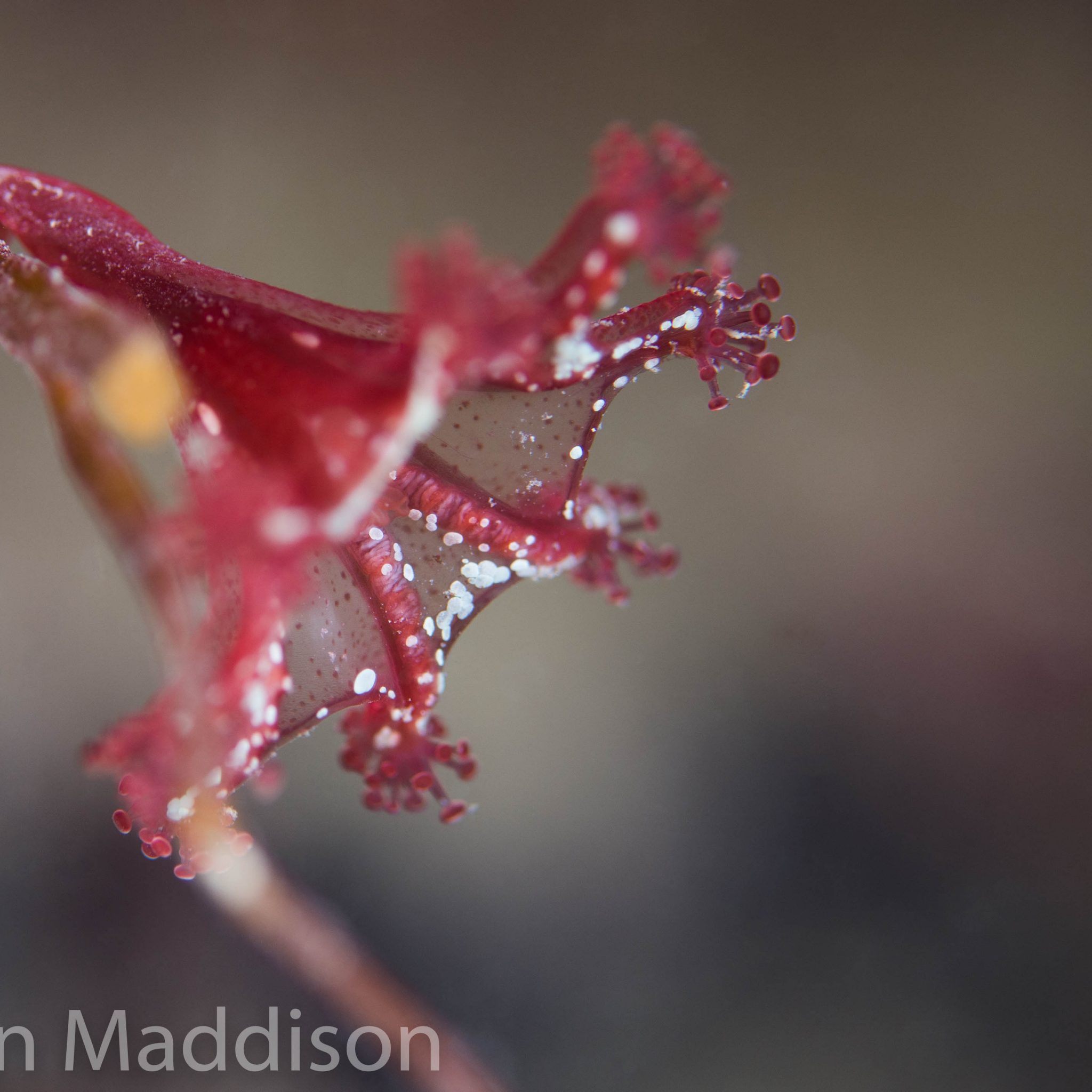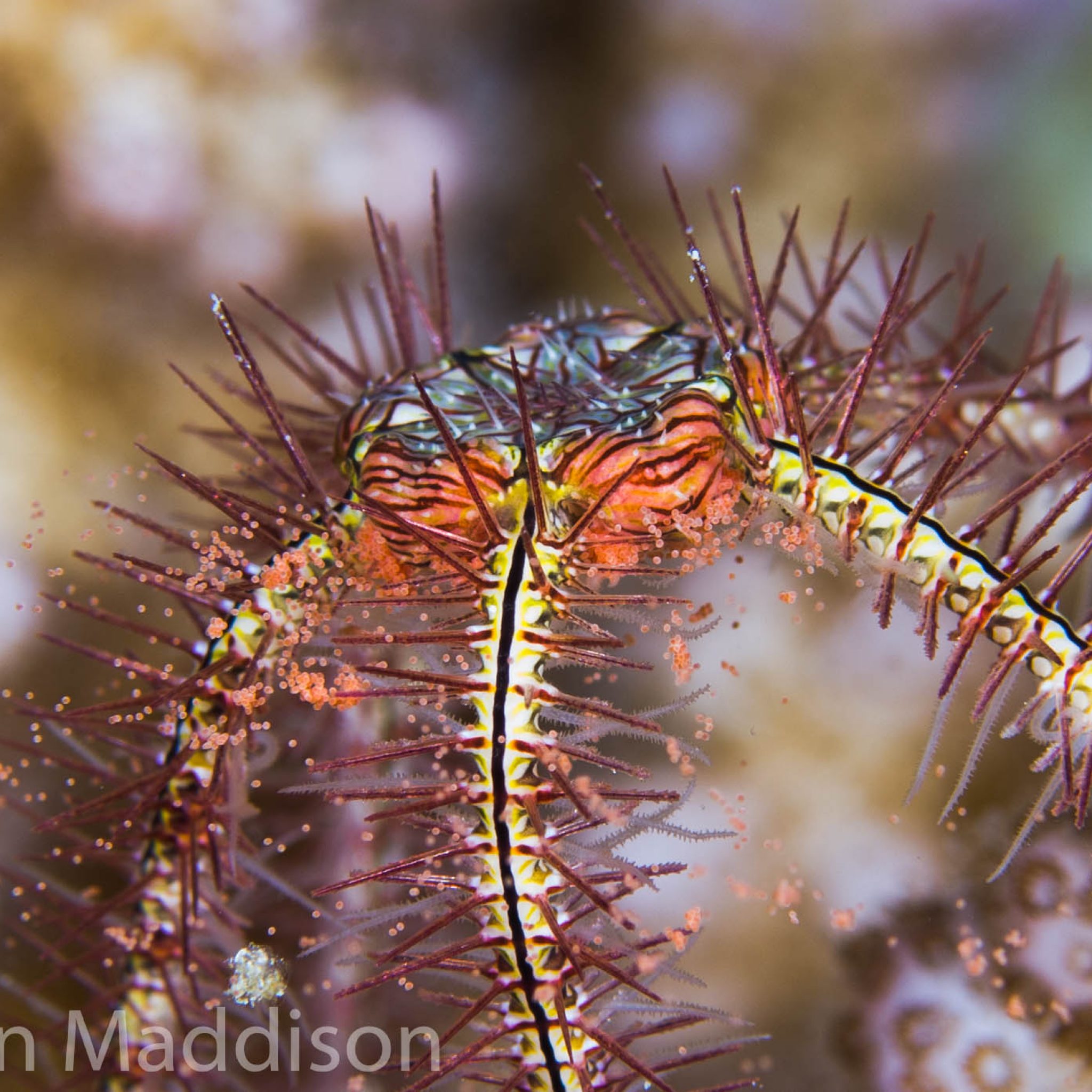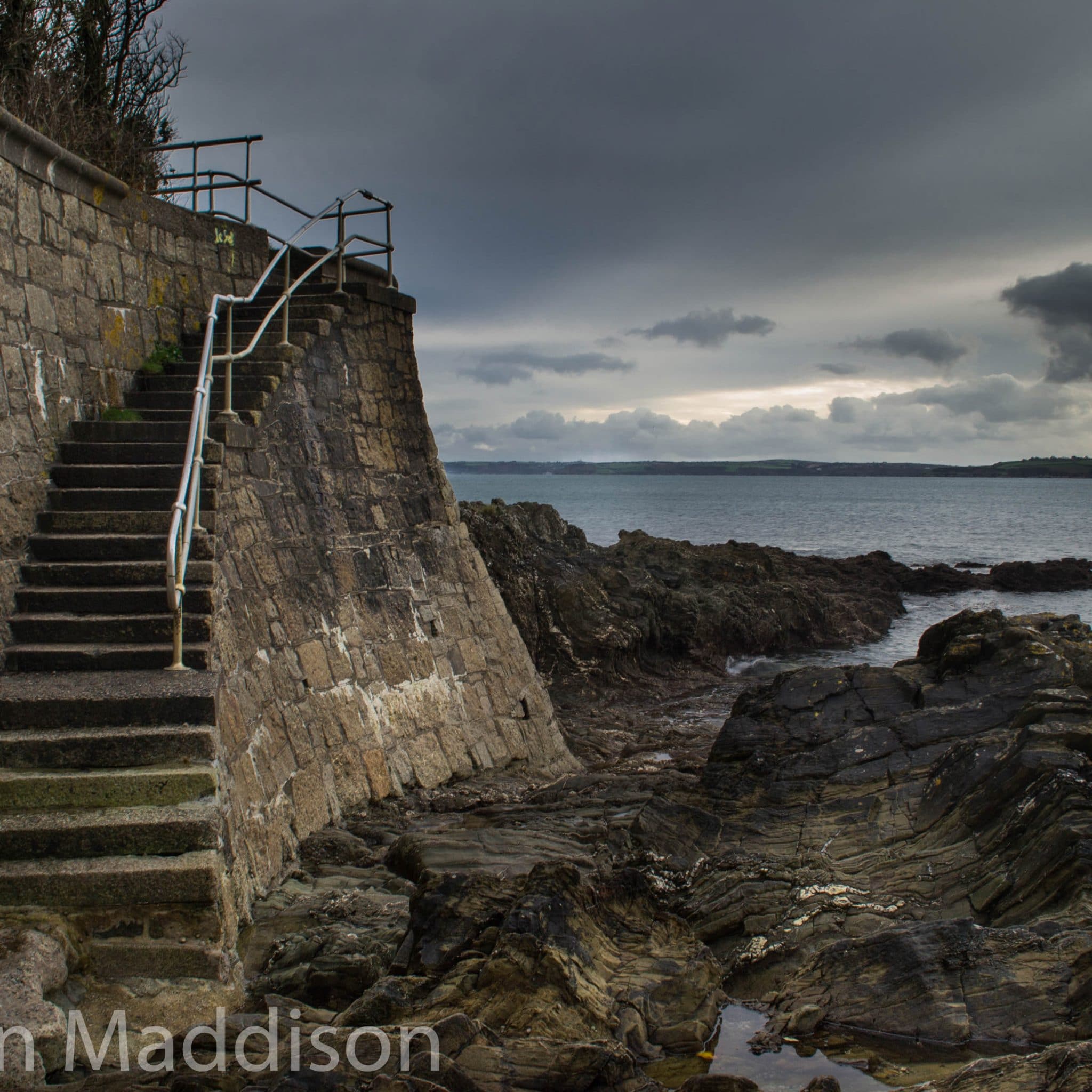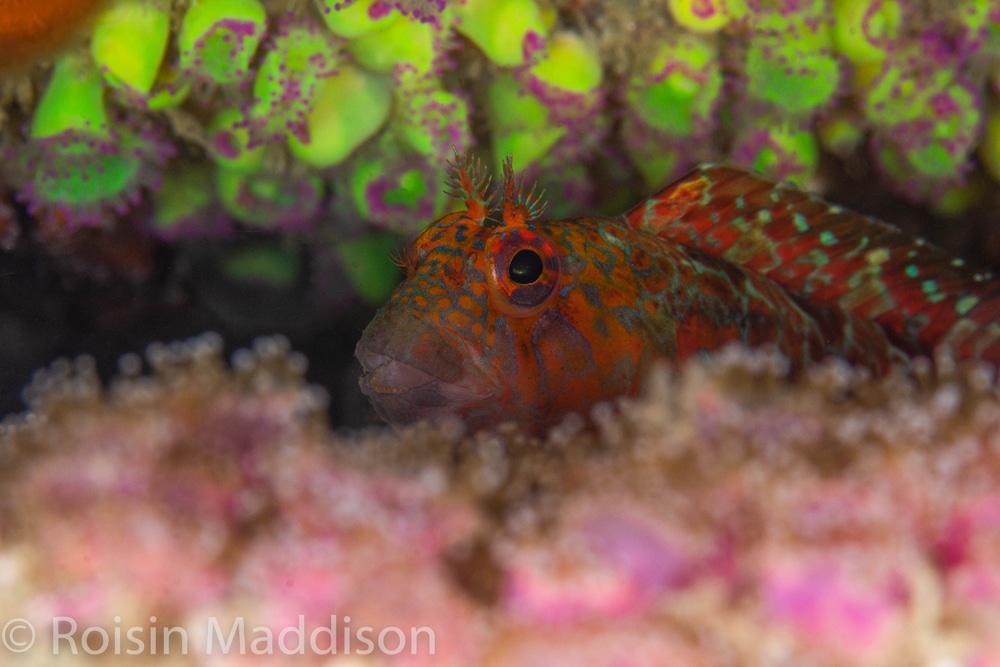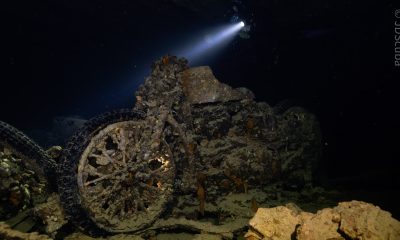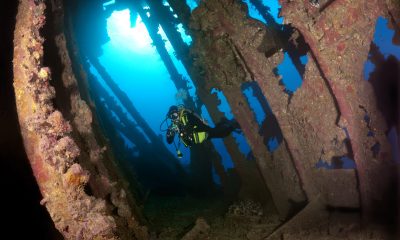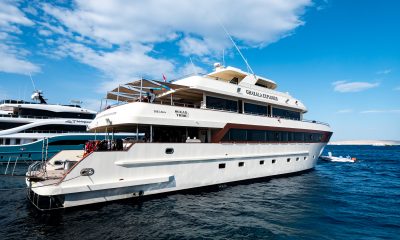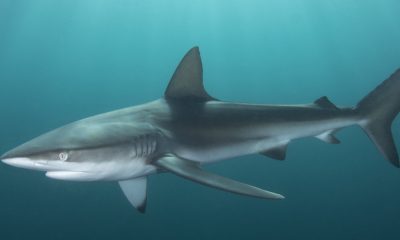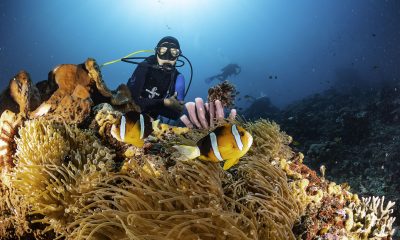News
Scubaverse Underwater Photographer Interview: Roisin Maddison
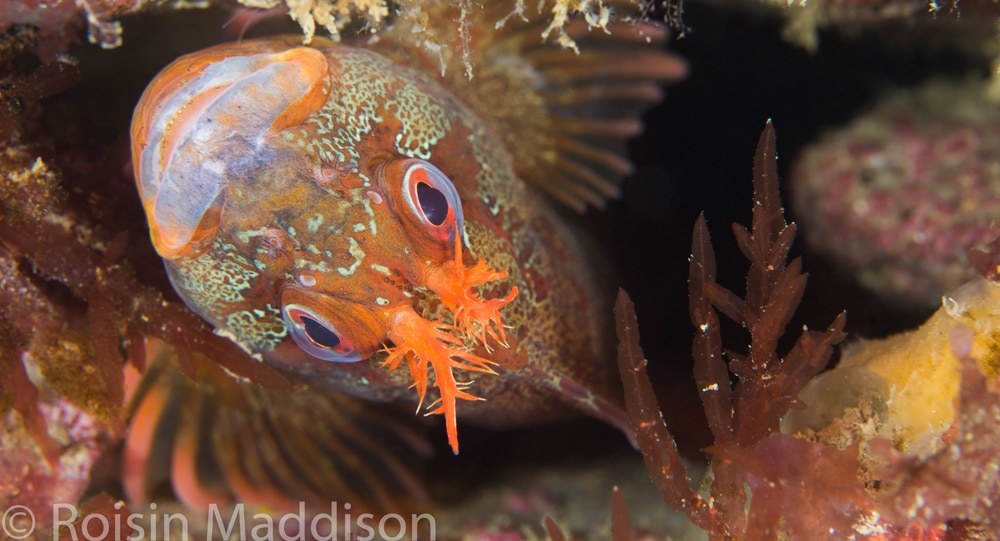
In an ongoing series, Scubaverse’s Underwater Photography Editor Nick Robertson-Brown talks to underwater photographers from around the world that he admires. In this blog: Roisin Maddison
NRB: How did your underwater photography start?
RM: Growing up with a mountaineer for a father I spent the majority of my childhood in the British countryside running around with my dad’s old compact film camera bossing people around telling getting them to pose for photos or to get out of my way of my shot. Back then it would take months to get the photos developed, mostly due to the fact that my dad never took them to the photo shop and would end up stockpiling rolls upon rolls of film but also because he would inevitably forget to go and pick them up when he eventually did.
It was on my 12th birthday that my dad bought me my first digital camera, a small Olympic compact that I’m pretty sure I still have hidden in a box in my old bedroom. It was from there that my photography really kicked off, now that I could see what photos I was taking, and I no longer had to wait months to receive the final product only for it to be blurred or out of focus.
It was however one of my high school art teachers that encouraged me to take my photography seriously and to take it on into my A-levels where I found that I really did have a talent and a passion for photography, favouring it over all of my other “academic” subjects.
It was a given that I was going to go on and study photography at University but nature photography was always my passion, I just couldn’t be bothered with the fashion or street photography elements of my course and I was adamant that I wanted to be based near the sea. However, all the courses I researched or came across were all heavily based on editorial, fashion, urban photography areas that I just wasn’t interested in. Until I came across Falmouth University’s Marine and Natural History Photography course. It was ideal. It was near the sea and it was a course based entirely on nature photography; it even had a diving element, which sounded like a bit of fun. At this stage I had never Scuba dived, I was an avid swimmer, but Scuba diving was never something I had considered doing, it just wasn’t on my radar but what the hell! It’ll be fun, I’ll give it a go.
Little did I know whilst on my first open water dive in the Delph Quarry or on my first university dive at Pendennis Silver Steps that Scuba diving and underwater photography was about to consume my entire life.
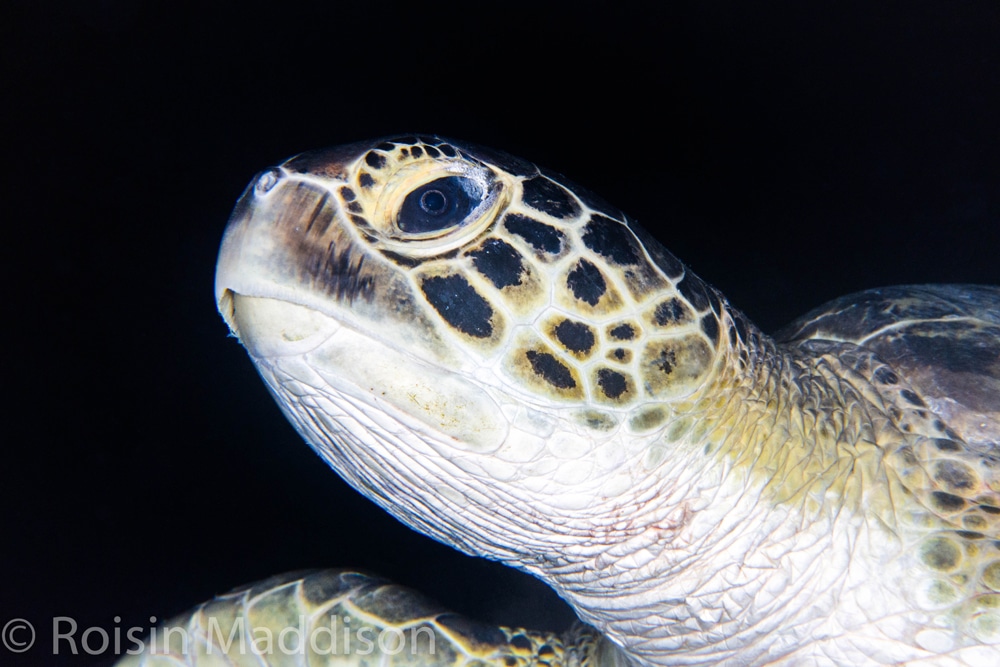 NRB: What is your favourite u/w camera equipment (past & present) & why?
NRB: What is your favourite u/w camera equipment (past & present) & why?
RM: My first underwater photography dive was done with a compact Panasonic set up with a single strobe. Once we had proved ourselves trustworthy, we graduated on to a Nikon D7000 and Nauticam housing with either a 60mm macro or the Tokina 10-17 fisheye lens. When I graduated university and no longer had access to the uni’s cameras I treated myself to Nauticam housing for my D7200 and a 60mm macro. For about 2 years this 60mm macro was the only dome port I owned; underwater photography equipment isn’t cheap, especially for a recent photography graduate. Whilst I have since expanded my equipment collection and tried out other cameras and set ups, my D7200 and my trusty 60mm macro will always be my go-to set up. The 60mm is just such a versatile lens. It is a macro lens but it’s perfect for those slightly larger profile creatures, that aren’t quite big enough to warrant a wide angle, whilst also being perfect for any teeny tiny macro critters. Admittedly it doesn’t get as close or as much detail as the 105mm macro but if a turtle swims past whilst you have the 105mm on you have no chance. With the 60mm it may not be the perfect shot but you are at least in with a chance. Plus, there’s always room for a bit of cropping where those teeny tiny critters are concerned.
NRB: What would be your advice to anyone new to underwater photography?
RM: I would recommend getting to grips with manual setting and light set ups straight from the off, set yourself up in a nice shallow reef with a VERY patient buddy (even better a buddy who is already an underwater photographer that can advise you) and start off by practicing different settings and lighting techniques on a simple and static subject; anemones are always a good shout.
Underwater photography workshops are always a massive boost when starting out as well as underwater photography books. Alex Mustards book Underwater Photography masterclass is my absolute go-to when trying out a new technique. But remember even if you are an amazing photographer top side and an experienced diver, it is going to take a lot of time and effort to get to grips with underwater photography and undoubtedly your first few images are not going to be perfect. But stick with it because when you get your first perfect shot, all that time and effort will be worth it.
NRB: What, or who, has been your single biggest inspiration for your underwater photography?
RM: My biggest inspiration for underwater photography has got to be Jane Morgan, not only is she an amazing underwater photographer who has had many amazing articles and images published over the years, but she is also a genuinely kind and caring person who wants to help and inspire the next generation of underwater photographers. Many other Marine and Natural History students and I have had the pleasure of having her as our tutor and all-round photography guru. Over the years she has had to put up with my badgering her for tips and tricks, but she has always been there to lend a piece of equipment or teach me a new technique. She helped me get my first magazine article published and all round cheered me on to pursue a career in underwater photography.
NRB: What image are you most proud of and why?
RM: This is a hard question to answer, I am proud of so many of my images and I don’t think I would be able to choose just one. Quite often my favourite images from a dive or a trip aren’t necessarily the best photographs or the most technical, they are the ones that have the best memories and the most meaning to me.
To name just one is hard but I think I would have to pick a photograph I took in Egypt two years ago. I dropped down on a night dive and the first thing I came across was a brittle star. It was stood up on its arms holding its body in the air, which was strange behaviour that I had never come across before, so I stopped to photograph it and as I did it started spawning right in front of my camera lens. I was amazed and privileged to get to witness such an amazing bit of nature.
NRB: Where is your favourite dive location, and is it for the photography?
RM: My favourite dive location is a little 5m shore dive off the coast of Falmouth. Pendennis Sliver Steps is the easiest most simple dive site you will ever visit but it is also the most stunning. It is the perfect dive site to jump into on your way home from work and get a bit of photography practice in, whether its testing out new equipment or techniques or just keeping your hand in during a busy period, or when the weather has prevented you from getting out anywhere else. Most importantly of all it is bursting with life, there are new species to find on nearly every dive but being such an easy dive site to jump into means I can spend so much time there and get to know to resident species, figuring out where they live, tracking their behaviours and markings throughout the year and each time getting to take better and more technical photographs.
NRB: What are you views on marine life manipulation, moving subjects?
RM: Personally, I am not one for marine life manipulation whether it be in water whilst taking the picture or in post edit. I like my photos to reflect what I saw on the dive as it was when I took the photo. I will however admit to occasionally doing a bit of ‘gardening’ and removing a stray bit of seaweed or two out of the way of the frame, but that is as far as I will go.
NRB: What do you look for when you are making your images?
RM: It very much depends on what dive I’m on and what I am taking the photograph for. If I am out on a pleasure dive, I will be looking for images with a difference. Every photographer wants to take that one image that nobody has ever taken before, but I will also be taking photographs for myself to document my dive and the species I found sometimes for my own memories and sometimes for species research and/or magazine articles. I think it’s very important for photographers not to get to bent up in taking the perfect image on every dive. Whilst underwater photography may be my chosen profession it is also my hobby and it is very important to me that I don’t turn my hobby, my escape, my passion, into an obsession or ruin it by making it feel too much like work.
NRB: What motivates you to take u/w photos?
RM: I take underwater photographs to create an awareness for non-divers as to the beauty and importance of our marine world. More specifically for me is a desire to exhibit how stunning and extensive our own British marine life is. In the last few years the threat to our Coral Reefs and tropical oceans has finally been taking seriously and divers and non-divers have finally realised the importance of our oceans and how imperative it is to save them. I want my photography to highlight that it isn’t just the tropical coral reefs that need savin. British marine habitats are just as important and just as exquisite.
NRB: If you could photograph any one thing/place what or where would that be?
RM: I spent 5 years living and diving in Cornish waters without ever coming across a blue shark or a basking shark. One of my aims for this next year is to get onto one of the blue shark/basking shark trips and to photograph these gentle giants in British waters.
To see more of Roisin’s work click here.
Gear News
Scubapro Free Octopus Promotion 2024
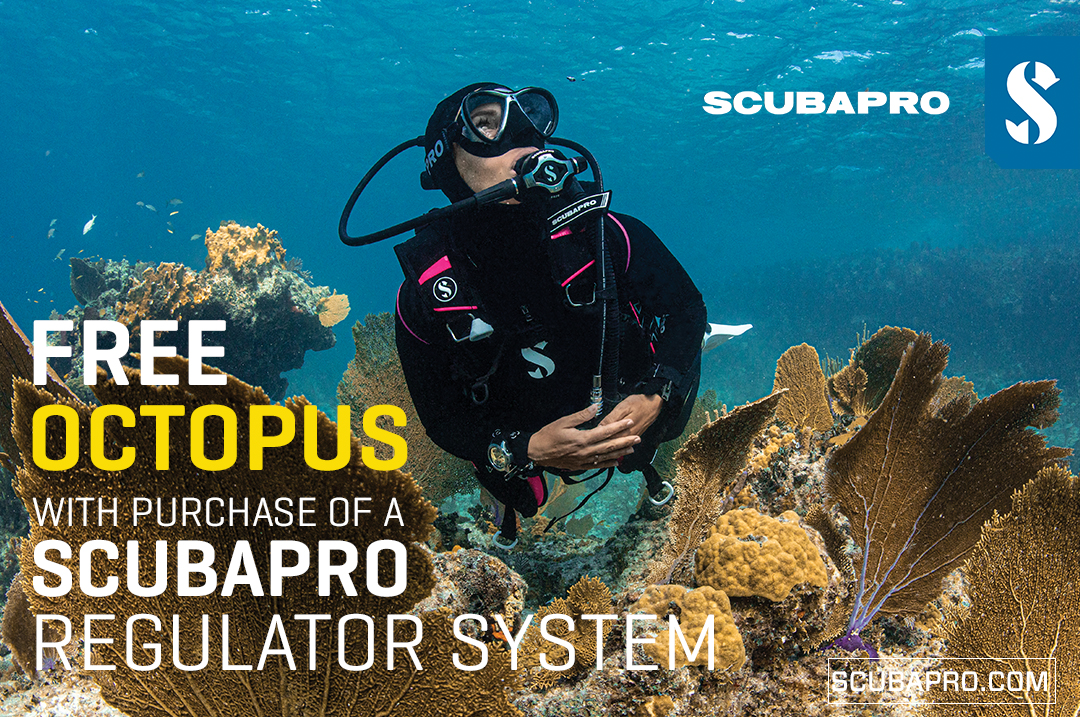
Free Octopus with every purchase of a SCUBAPRO regulator system
Just in time for the spring season, divers can save money with the FREE OCTOPUS SPRING PROMOTION! Until July 31st SCUBAPRO offers an Octopus for free
with every purchase of a regulator system!
Get a free S270 OCTOPUS with purchase of these combinations:
MK25 EVO or MK19 EVO with A700
MK25 EVO or MK19 EVO with S620Ti
MK25 EVO or MK19 EVO with D420
MK25 EVO Din mit S620Ti-X
Get a free R105 OCTOPUS with purchase of the following combinations:
MK25 EVO or MK19 EVO with G260
MK25 EVO or MK17 EVO with S600
SCUBAPRO offers a 30-year first owner warranty on all regulators, with a revision period of two years or 100 dives. All SCUBAPRO regulators are of course certified according to the new European test standard EN250-2014.
Available at participating SCUBAPRO dealers. Promotion may not be available in all regions. Find an authorized SCUBAPRO Dealer at scubapro.com.
More information available on www.scubapro.com.
Blogs
Northern Red Sea Reefs and Wrecks Trip Report, Part 3: The Mighty Thistlegorm
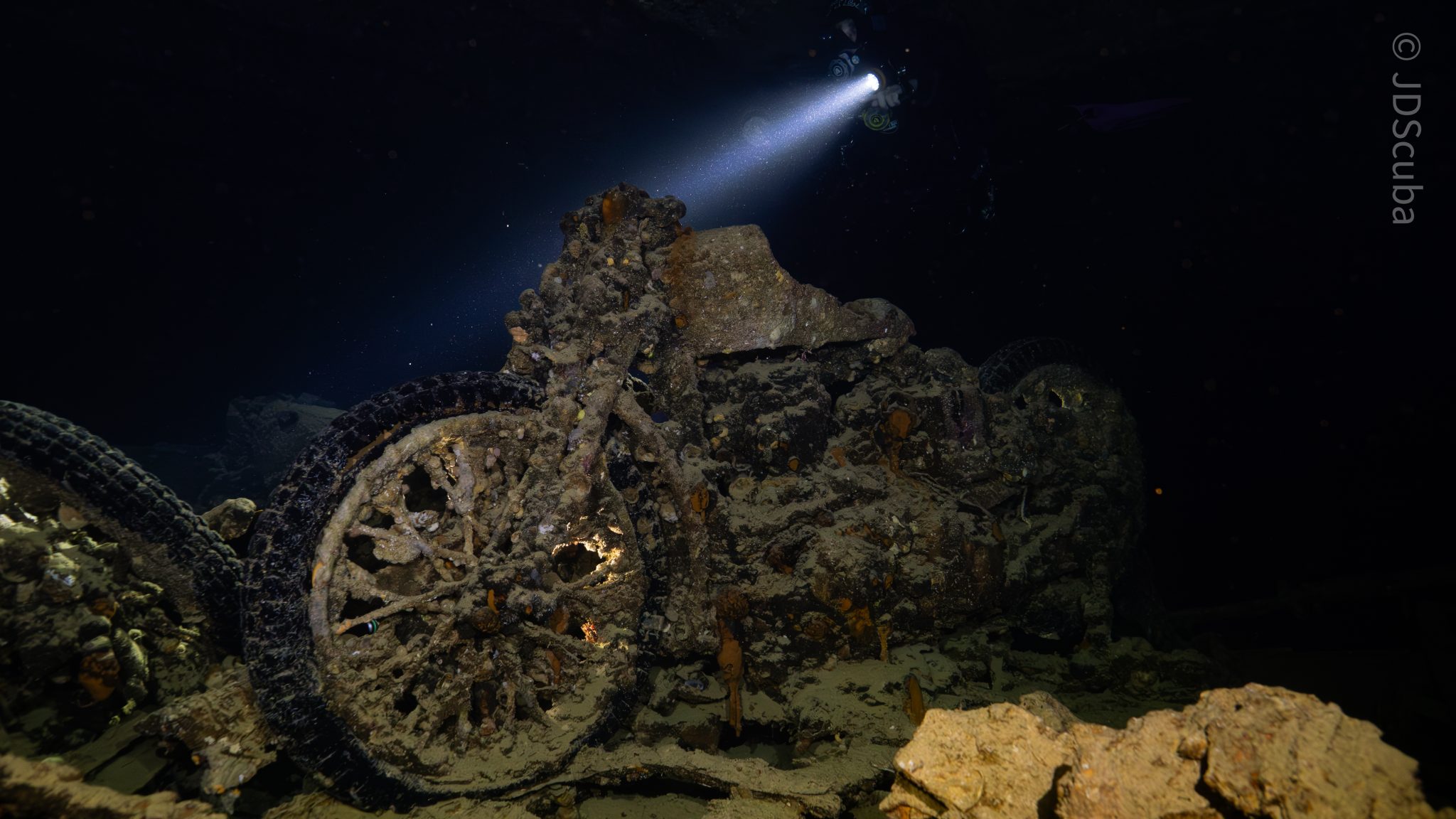
Jake Davies boards Ghazala Explorer for an unforgettable Red Sea diving experience…
Overnight, the wind picked up, making the planned morning dive a bit bumpy on the Zodiacs to the drop point on Thomas Reef. There, we would dive along the reef before descending through the canyon and then passing under the arch before ascending the wall with a gentle drift. The site provided great encounters with more pelagic species, including shoals of large barracuda, tuna, and bigeye trevally.
Once back on the boat, it was time to get everything tied down again as we would head back south. This time, with the wind behind us, heading to Ras Mohammed to dive Jackfish Alley for another great gentle drift wall dive before then heading up the coast towards the Gulf of Suez to moor up at the wreck of the Thistlegorm. This being the highlight wreck dive of the trip and for many onboard, including myself, it was the first time diving this iconic wreck. I had heard so much about the wreck from friends, and globally, this is a must on any diver’s list. Fortunately for us, there was only one other boat at the site, which was a rarity. A great briefing was delivered by Ahmed, who provided a detailed background about the wreck’s history along with all the required safety information as the currents and visibility at the site can be variable.
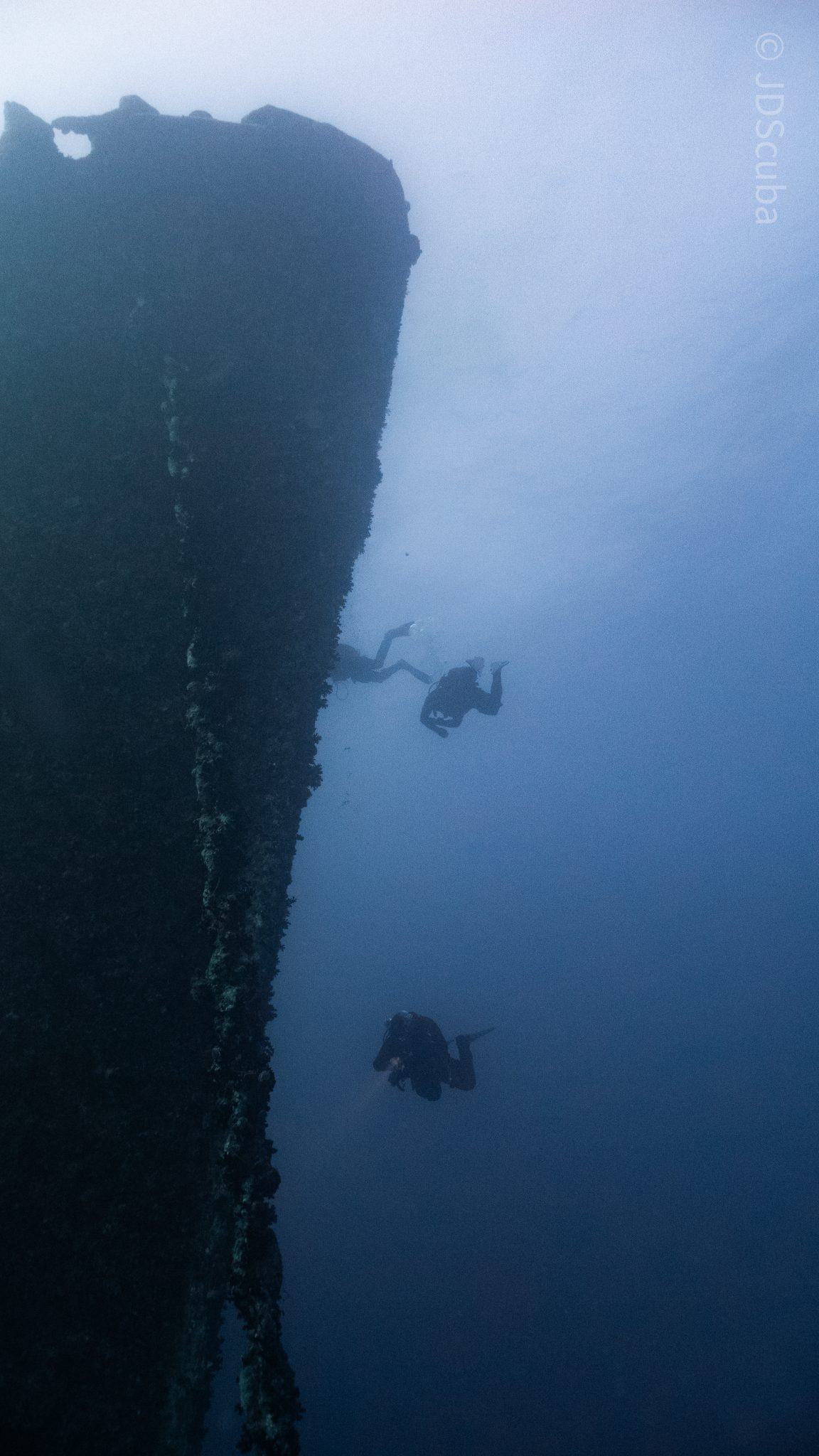
Kitting up, there was a lot of excitement on deck before entering the water and heading down the shoreline. Descending to the wreck, there was a light northerly current which reduced the visibility, making it feel more like the conditions that can be found off the Welsh coast. At 10m from the bottom, the outline of the wreck appeared as we reached the area of the wreck which had been bombed, as our mooring line was attached to part of the propeller shaft. Arriving on deck, instantly everywhere you looked there were many of the supplies which the ship was carrying, including Bren Carrier tanks and projectiles that instantly stood out.
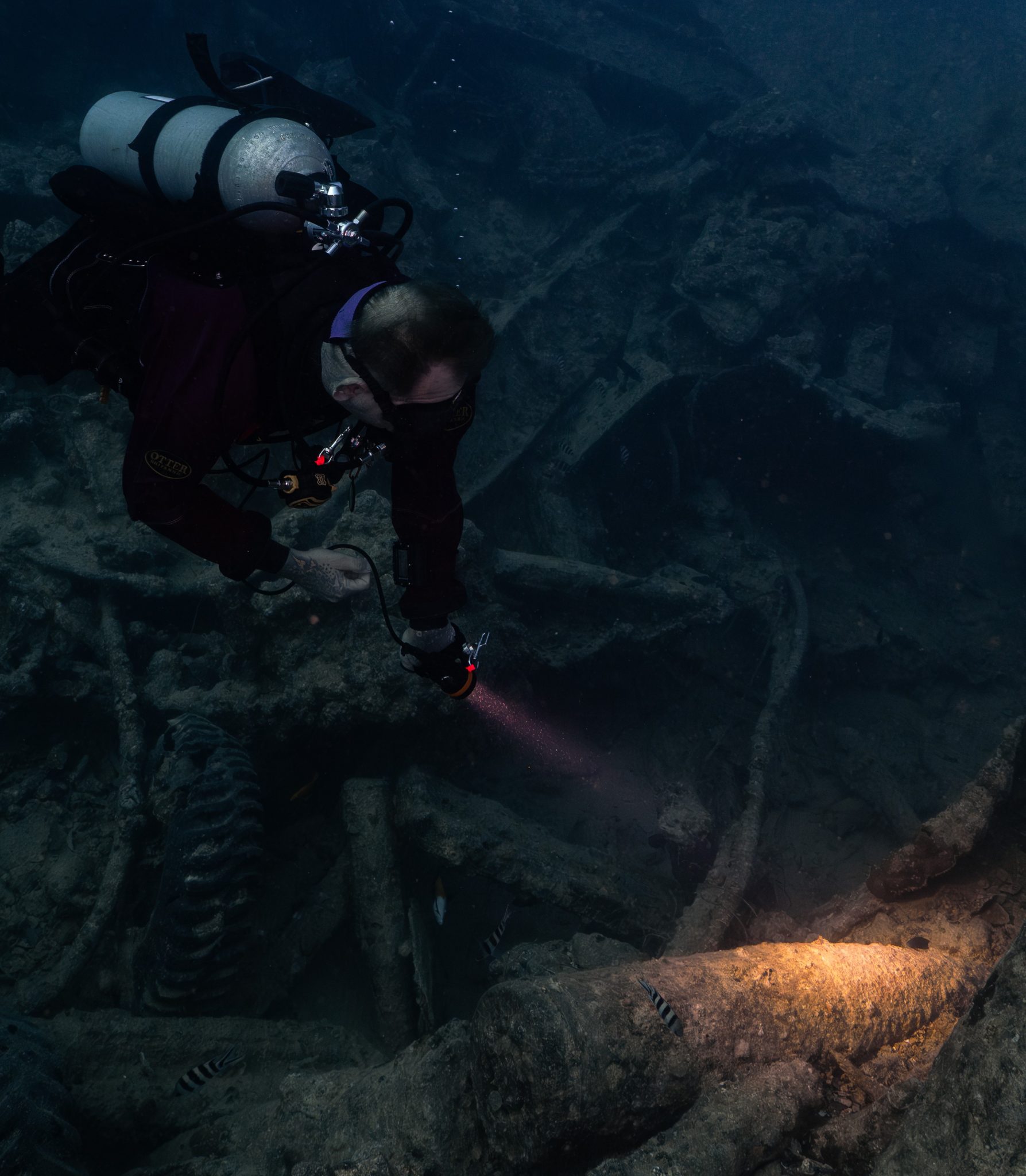
We headed around the exterior, taking a look at the large propeller and guns mounted on deck before entering the wreck on the port side to take a look in the holds. It was incredible to see all the trucks, Norton 16H, and BSA motorcycles still perfectly stacked within, providing a real snapshot in time.
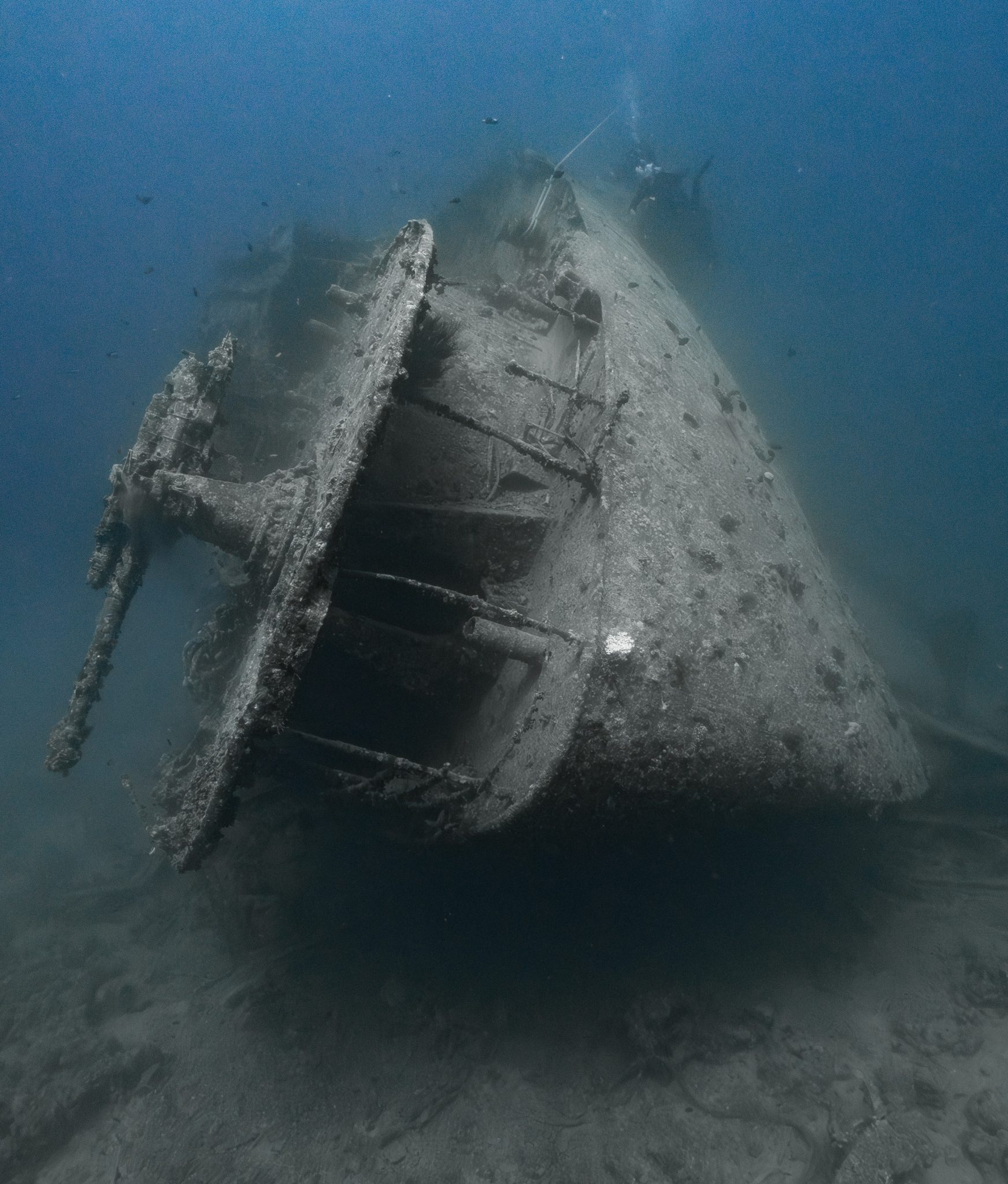
Overall, we had four dives on the Thistlegorm, where for all of the dives we were the only group in the water, and at times, there were just three of us on the whole wreck, which made it even more special, especially knowing that most days the wreck has hundreds of divers. Along with the history of the wreck, there was plenty of marine life on the wreck and around, from big green turtles to batfish, along with shoals of mackerel being hunted by trevally. Some unforgettable dives.
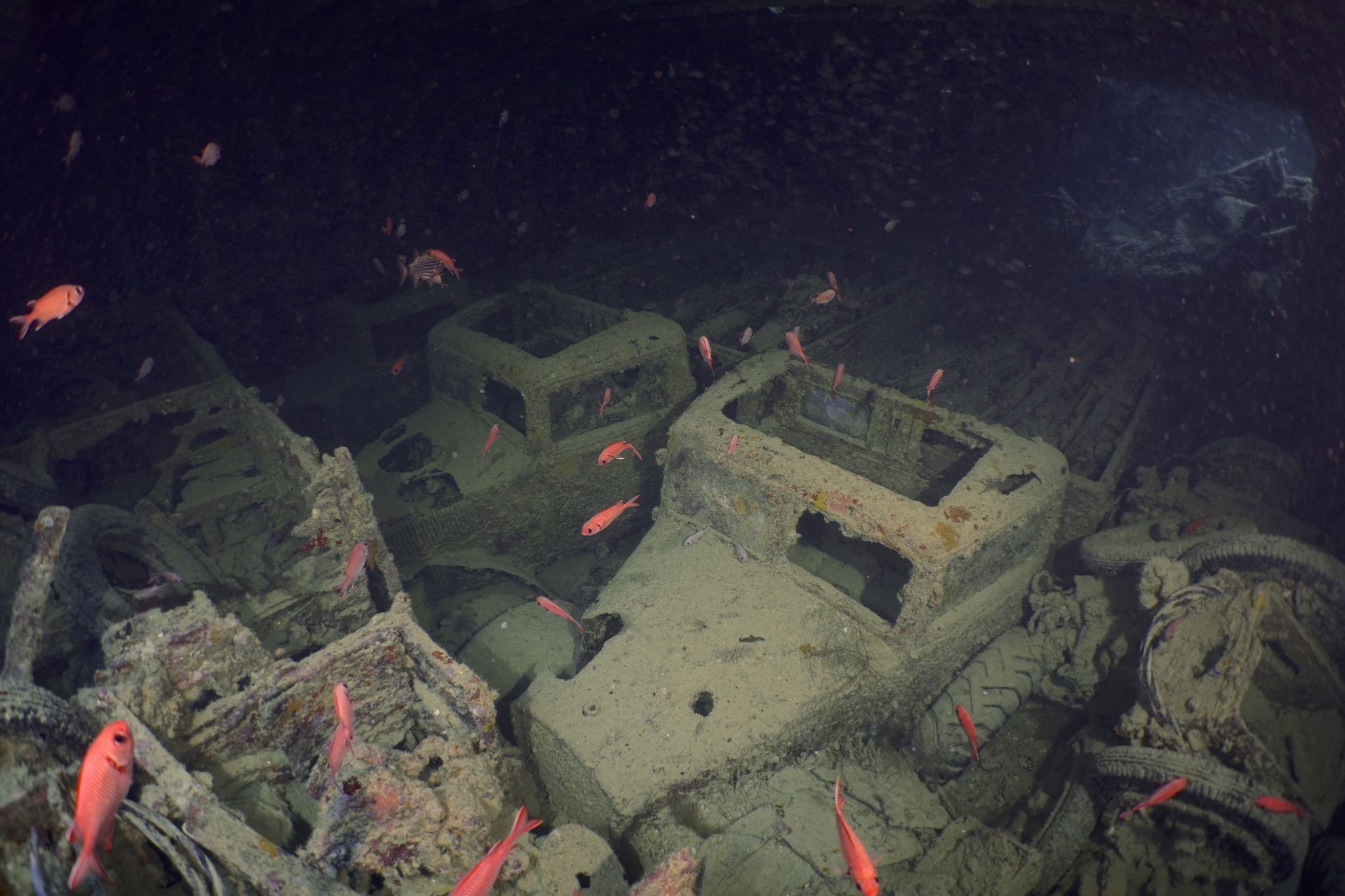
The final leg of the trip saw us cross back over the Suez Canal to the Gobal Islands where we planned to stay the night and do three dives at the Dolphin House for the potential of sharing the dive with dolphins. The site, which included a channel that was teeming with reef fish, especially large numbers of goatfish that swam in large shoals along the edge of the reef. These were nice relaxing dives to end the week. Unfortunately, the dolphins didn’t show up, which was okay as like all marine life they are difficult to predict and you can’t guarantee what’s going to be seen. With the last dive complete, we headed back to port for the final night where it was time to clean all the kit and pack before the departure flight the next day.
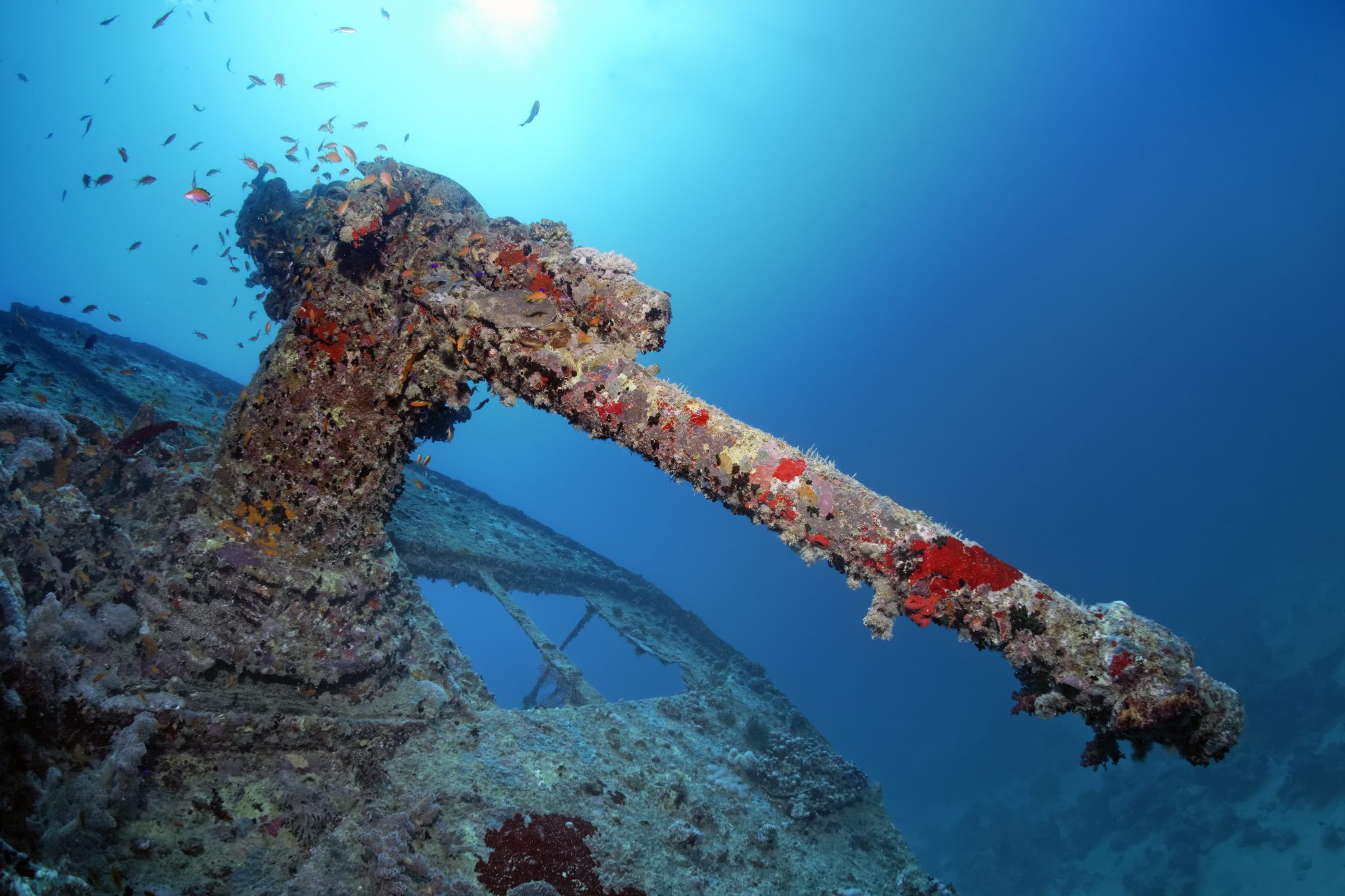
The whole week from start to finish on Ghazala Explorer was amazing; the boat had all the facilities you need for a comfortable week aboard. The crew were always there to help throughout the day and the chefs providing top quality food which was required after every dive. The itinerary providing some of the best diving with a nice mixture of wreck and reef dives. I would recommend the trip to anyone, whether it’s your first Red Sea liveaboard in the Red Sea or you’re revisiting. Hopefully, it’s not too long before I head back to explore more of the Red Sea onboard Ghazala Explorer.
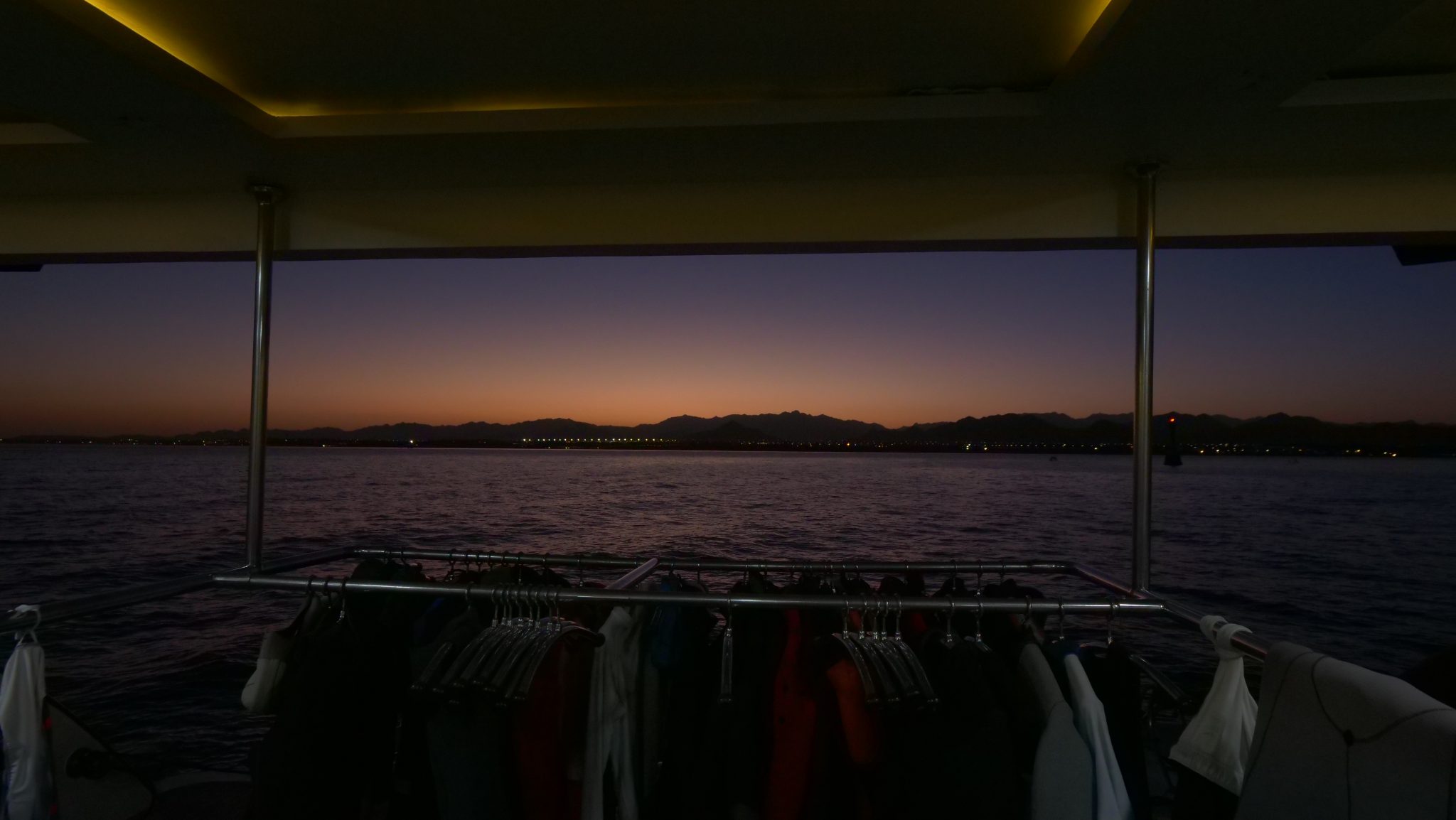
To find out more about the Northern Red Sea reef and wrecks itineraries aboard Ghazala Explorer, or to book, contact Scuba Travel now:
Email: dive@scubatravel.com
Tel: +44 (0)1483 411590
Photos: Jake Davies / Avalon.Red
-
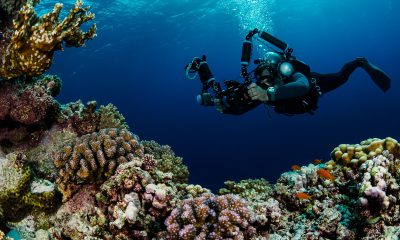
 News3 months ago
News3 months agoHone your underwater photography skills with Alphamarine Photography at Red Sea Diving Safari in March
-
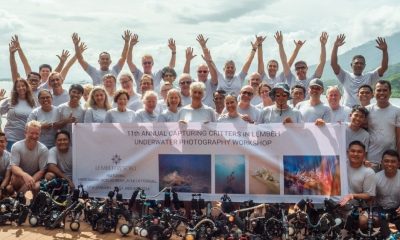
 News3 months ago
News3 months agoCapturing Critters in Lembeh Underwater Photography Workshop 2024: Event Roundup
-
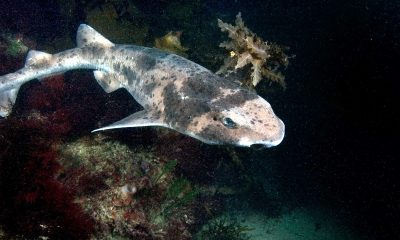
 Marine Life & Conservation Blogs2 months ago
Marine Life & Conservation Blogs2 months agoCreature Feature: Swell Sharks
-
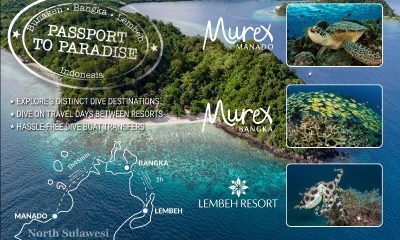
 Blogs2 months ago
Blogs2 months agoMurex Resorts: Passport to Paradise!
-
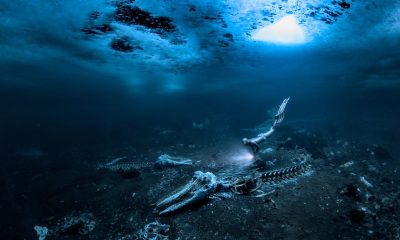
 Blogs2 months ago
Blogs2 months agoDiver Discovering Whale Skeletons Beneath Ice Judged World’s Best Underwater Photograph
-
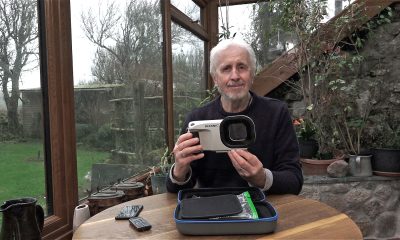
 Gear Reviews3 months ago
Gear Reviews3 months agoGear Review: Oceanic+ Dive Housing for iPhone
-
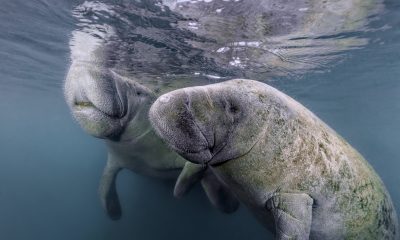
 Marine Life & Conservation2 months ago
Marine Life & Conservation2 months agoSave the Manatee Club launches brand new webcams at Silver Springs State Park, Florida
-
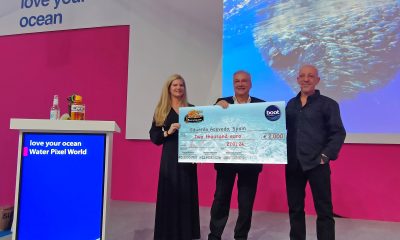
 News3 months ago
News3 months agoWorld’s Best Underwater Photographers Unveil Breathtaking Images at World Shootout 2023


